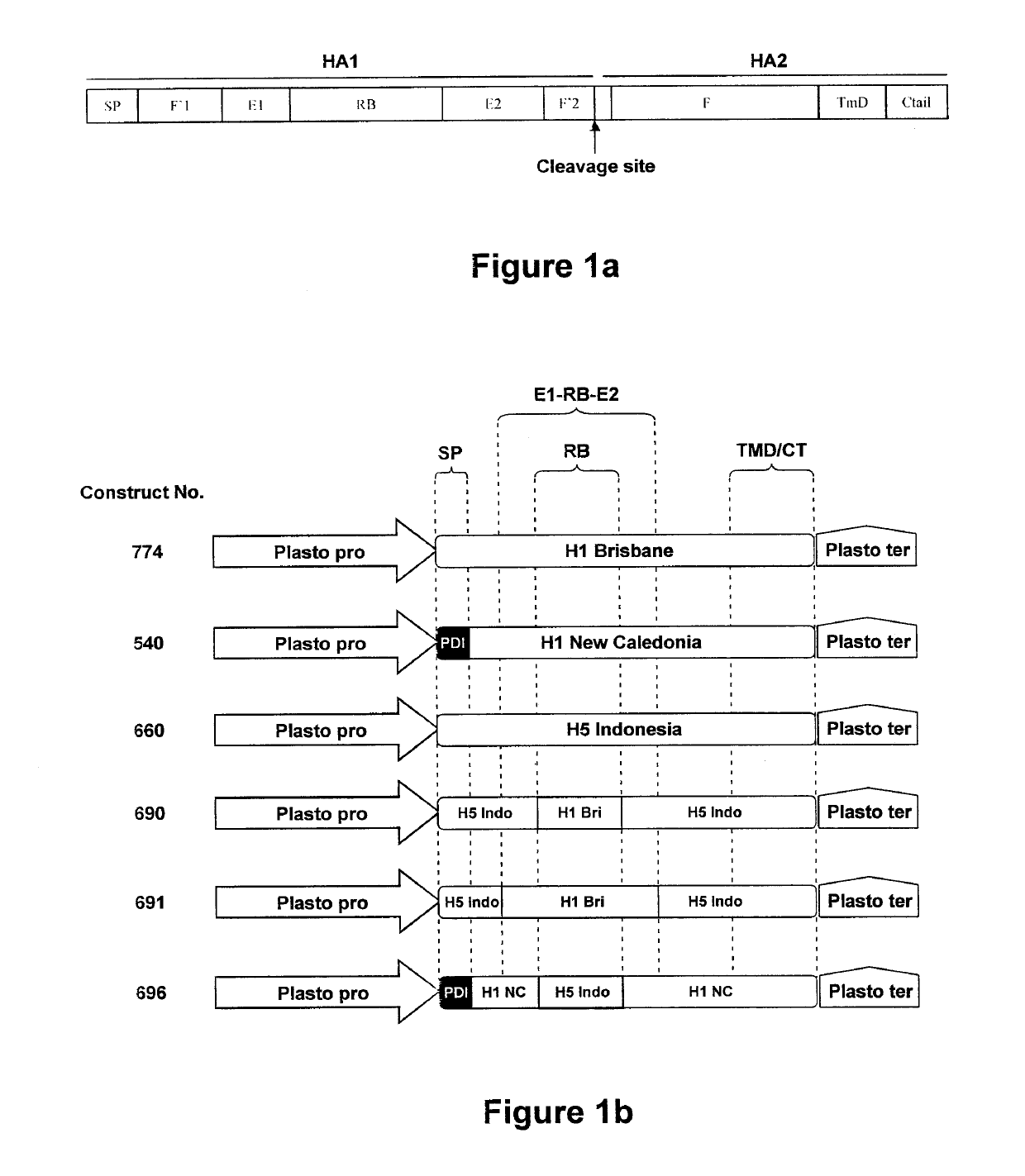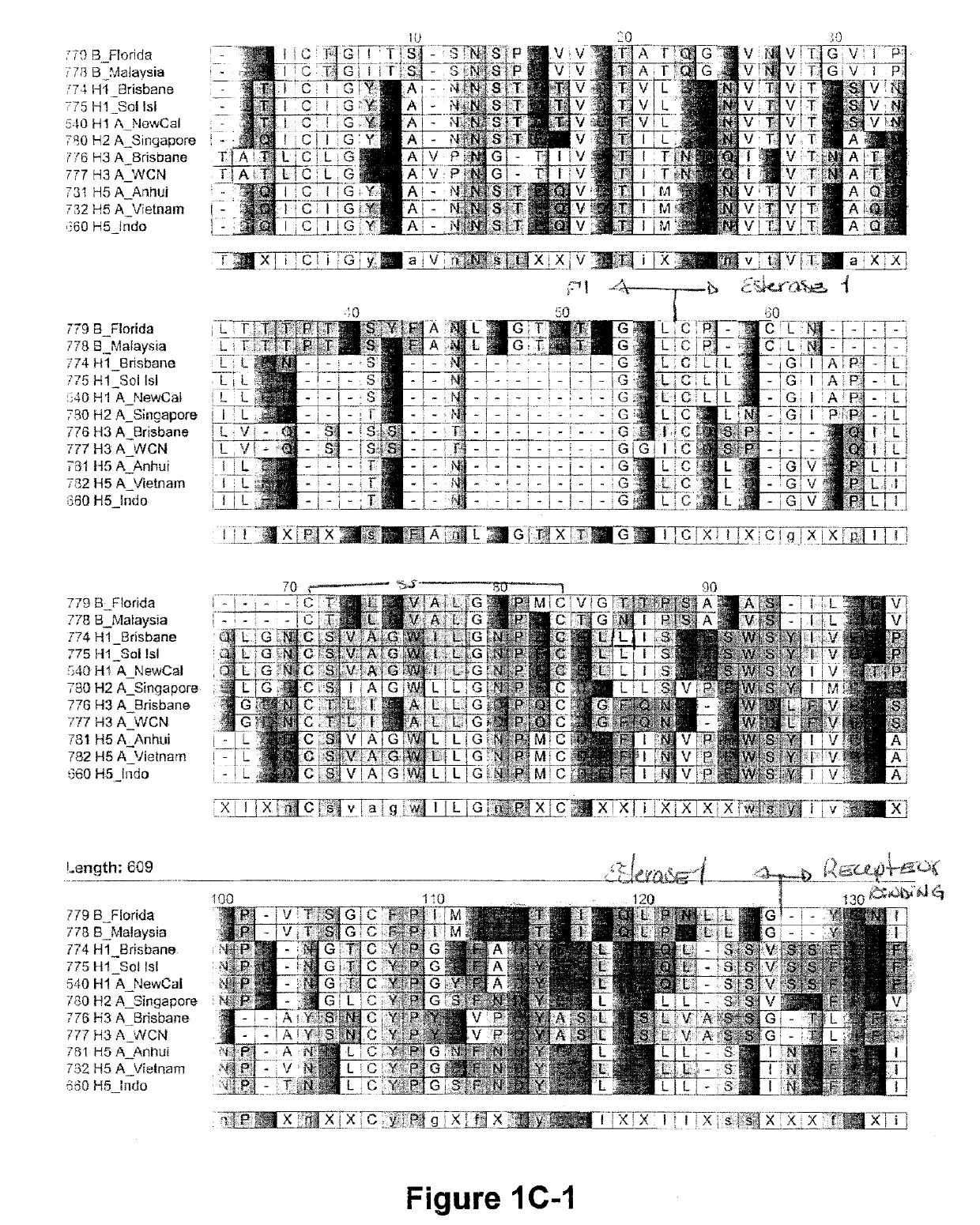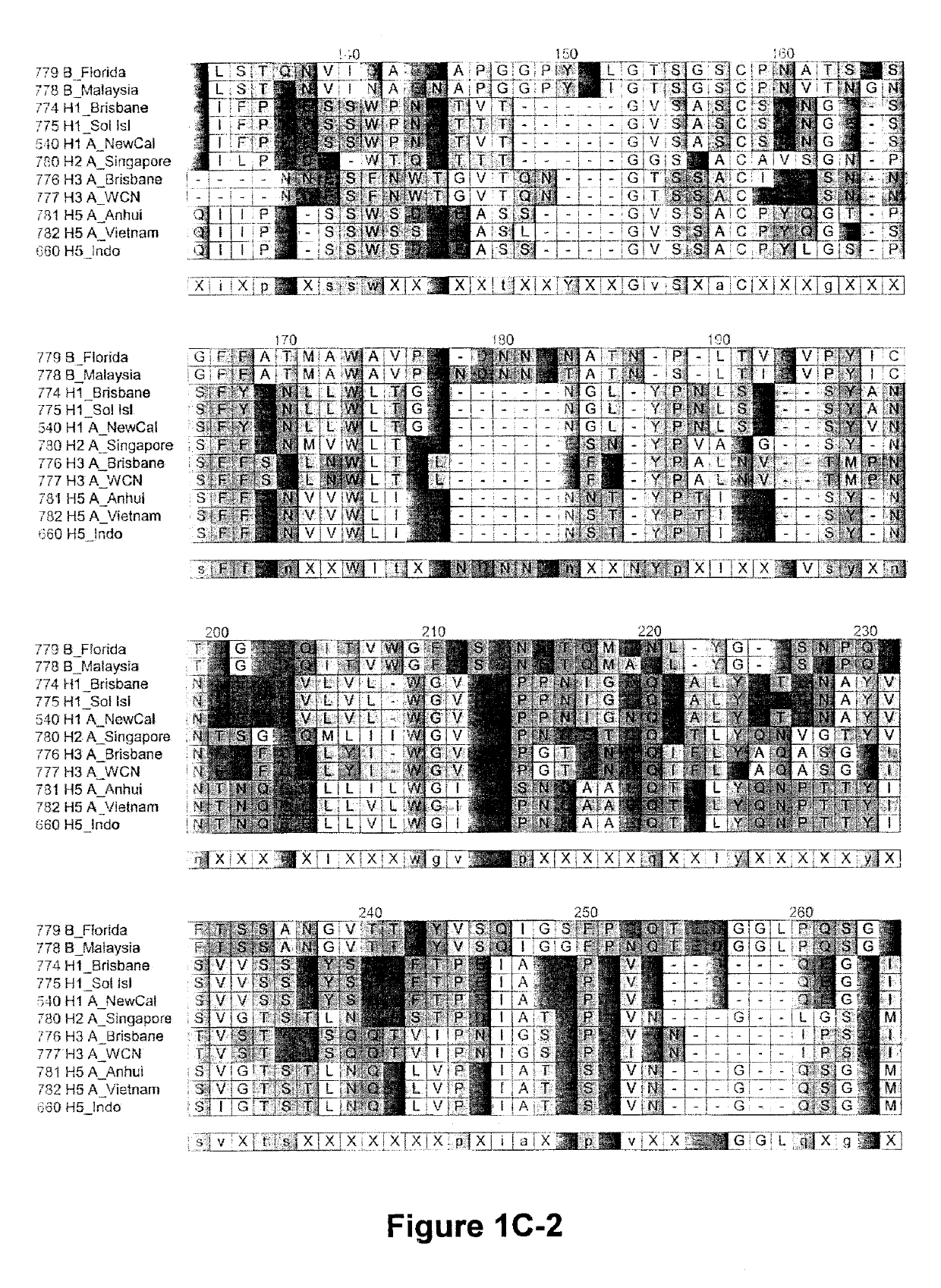Chimeric influenza virus-like particles comprising hemagglutinin
a technology of chimeric influenza virus and hemagglutinin, which is applied in the field of viruslike particles, can solve the problems of insufficient production, inability to vaccinate the world's population, and insufficient vaccine doses produced annually, so as to facilitate glycoprotein antigen capture, strengthen immune reaction, and enhance immune response induced
- Summary
- Abstract
- Description
- Claims
- Application Information
AI Technical Summary
Benefits of technology
Problems solved by technology
Method used
Image
Examples
example 1
apping Strategy for RB and / or Esterase Domains on Influenza Subtype Stems
[0253]The RB subdomain of H5 / Indo may be replaced by an RB subdomain of H1, H3 or B HA. The resulting chimeric HA provides an SDC H5 / Indo to form VLPs and present the RB subdomain comprising immunogenic sites of H1, H3 or B. The H5 / Indo RB subdomain may be inserted on an H1 stem (H1 / NC). FIGS. 15A and 15B illustrate the amino acid sequences at the fusions of the indicated subdomains, and the amino acid sequences of the respective subdomains is provide in FIG. 2 (constructs 690, 734, 696 and 691) and Tables 4 (constructs 900 and 745) and 5 (constructs 910, 920 and 930). Amino acid sequences illustrated in FIG. 2, and Tables 4 and 5 do not include signal peptide sequences.
[0254]
TABLE 4Subdomains and chimeric influenza HA. Chimeric influenzaHA comprising heterologous RB subdomain.ConstN-terminalC-terminal stem:NoStem: −F′1 + E1RB headE2 + F′2-Stop900H5 / IndoH3 / BrisbaneH5 / Indo(SEQ IDDQICIGYHANNSTEQYDVPDYASLRSLVASSGT...
example 2
nt of Receptor B Binding (RB) or Receptor Binding and Esterase (E1-RB-E2) Subdomains of H5 A / Indonesia / 5 / 05 with that of H1 A / Brisbane / 59 / 2007: Comparison of Expression for Chimeric and Native Forms
[0264]To combine the high accumulation level of VLPs from H5 A / Indonesia / 5 / 05 with the antigenicity characteristics of H1 A / Brisbane / 59 / 2007, chimeric hemagglutinins were designed comprising domains from H1 A / Brisbane / 59 / 2007 fused to an H5 A / Indonesia / 5 / 05 stem domain cluster. Expression cassettes for the expression of the H5 / H1 hemagglutinin fusions are represented in FIG. 1 and amino acid sequences of the mature fusion proteins produced illustrated in FIG. 2.
[0265]To compare the accumulation level of H5 / H1 chimeric hemagglutinins with that of their native forms, Nicotiana benthamiana plants were infiltrated with AGL1 / 774, AGL1 / 691 and AGL1 / 690, and the leaves were harvested after a six-day incubation period. To determine the accumulation level of each HA form in the agroinfiltrated lea...
example 3
nt of Receptor Binding (RB) Subdomain of H1 A / New Caledonia / 20 / 99 with that of H5 A / Indonesia / 5 / 05. Comparison of Expression for Chimeric and Native Forms
[0268]Use of an H1 backbone (from A / New Caledonia / 20 / 99) for the presentation of H5 antigenic region was also evaluated. Expression cassettes for the expression of the H1 / H5 hemagglutinin fusion are represented in FIG. 1 and amino acid sequence of the mature fusion protein produced is presented in FIG. 2.
[0269]To compare the accumulation level of H1 / H5 chimeric hemagglutinin with that of its native form, Nicotiana benthamiana plants were infiltrated with AGL1 / 660 and AGL1 / 696, and the leaves were harvested after a six-day incubation period. To determine the accumulation level of each HA form in the agroinfiltrated leaves, proteins were extracted from infiltrated leaf tissue and analyzed by Western blotting using anti-H5 (Indonesia) polyclonal antibodies. A unique band of approximately 75 kDa (FIG. 7), corresponding in size to the u...
PUM
| Property | Measurement | Unit |
|---|---|---|
| pH | aaaaa | aaaaa |
| pH | aaaaa | aaaaa |
| pH | aaaaa | aaaaa |
Abstract
Description
Claims
Application Information
 Login to View More
Login to View More - R&D
- Intellectual Property
- Life Sciences
- Materials
- Tech Scout
- Unparalleled Data Quality
- Higher Quality Content
- 60% Fewer Hallucinations
Browse by: Latest US Patents, China's latest patents, Technical Efficacy Thesaurus, Application Domain, Technology Topic, Popular Technical Reports.
© 2025 PatSnap. All rights reserved.Legal|Privacy policy|Modern Slavery Act Transparency Statement|Sitemap|About US| Contact US: help@patsnap.com



